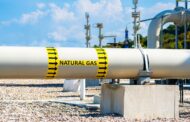UN chief Antonio Guterres announced Thursday, that record-shattering July temperatures show Earth has passed from a warming phase into an “era of global boiling.”
Ocean heat uptake is the essential measure of the Earth’s climate with 93% of the heat of global warming is going into the oceans. Where in the tropics the oceans are thermally stratifying, with lighter water near the surface and denser water at greater depth.
This configuration acts as a barrier to the efficient mixing of heat, carbon, oxygen, and the nutrients vital to aquatic life.
Efficient mixing of these ingredients would eliminate all risks of climate change, while producing twice as much energy as is currently being derived from fossil fuels.
A thermally stratified ocean lends itself to the conversion of a portion of the heat of global warming to work in accordance with the laws of thermodynamics and to the movement, through heat pipes, of surface heat to deep water where it is no longer any kind of environmental threat.
Global warming is problem of thermodynamics, governed by the laws of thermodynamics.
The first law is the application of conservation of energy to the system and shows how energy, including global warming, can be changed from one form to another, but it cannot be created or destroyed.
The second law sets the limits on the possible efficiency of a heat engine and determines the direction of energy flow, which is always from a region of high heat to a lower one.
Geoengineering is a set of emerging technologies designed to manipulate the environment and offset some of the impacts of climate change.
These technologies are typically split into two categories: carbon dioxide removal and solar radiation management.
Thermodynamic Geoengineering is a third way. It is the conversion of the heat of global warming to productive energy as was first demonstrated by the Greek, Hero of Alexandria, in the first century AD with his Aeolipile .
While Hero showed his Aeolipile could lift a weight, in 1845, the English Physicist James Prescott Joule used a falling weight to spin a paddle wheel in an insulated barrel to demonstrate how this mechanical energy raised the temperature of the water in the barrel.
His mechanical equivalent to heat was a 427 kilogram mass falling 1 meter against a 1 G gravitational field to increase the temperature of 1 kilogram of water by 1° Celsius.
This equivalency between work and heat energy led to the formulation of the first law of thermodynamics.
The process whereby the conversion of heat to work is accomplished is referred to ocean thermal energy conversion or OTEC, which is one the few non-polluting renewable energy technologies capable of delivering baseload power.
But not all OTEC is created equally.
With conventional OTEC, water is brought to the surface by massive pipes to condense a working fluid after it has passed through a turbine to produce power after the working fluid has been first vaporized using surface heat. The thermodynamic efficiency of this process is only about 3 percent and the 97 percent of the surface heat diluted by the cold water, is dispersed outward towards the poles that in the case of the Arctic is warmed 4 degrees over the course of 1,000 years at the same time as the tropics are cooled by the same amount.
This upwelling approach is at least two and a half times less efficient than Thermodynamic Geoengineering, which uses both warm and cold water contiguous to the evaporator and condenser, doesn’t dump cold water near the ocean surface, uses pipe that are one order in diameter smaller, thus reducing the entire cost of the system by a third, pumps 1/200th of the fluids, and reduces the parasitic pumping losses of these fluids by a third.
In their paper “Quantification of ocean heat uptake from changes in atmospheric oxygen and carbon dioxide composition, an international team of scientists calculated the amount of heat gain in the ocean between 1991 and 2016, on the basis of the amount of atmospheric oxygen and carbon dioxide released from the ocean as it warms. They found that the ocean gained on average 1.29 ± 0.79 times 10 to the 22nd power Joules of heat, which equates to 409 terawatts a year.
In a 2007 patent filing, the experimental physicist Melvin Prueitt, calculated an OTEC system like Thermodynamic Geoengineering, using a heat pipe to convey tropical heat into deep water could convert about 7.6% of the surface heat to work.
Four hundred nine terawatts of heat converted to work at 7.6 percent efficiency, produces 31 terawatts of primary energy, about 2.1 times as much energy as is currently being derived from fossil fuels.
About a sixth of the world’s electricity is currently produced by hydropower, which represents about seventy percent of our current renewable energy production.
Hydropower exploits the energy potential of gravity, the same way Joules experiment did, but in an open system, gravity is overcome by evaporation that converts surface water into vapor that rises to a higher elevation where it gains greater gravitational potential.
The temperature differential between a tropical surface and a depth of 1000 meters, where the temperature is universally about 4 degrees Celsius, has the same kind of hydraulic potential as the head of a hydroelectric dam.
Each degree centigrade corresponds to a hydraulic head of 427-meters.
Whereas the efficiency of a conventional dam is about 90 percent, the efficiency of Thermodynamic Geoengineering is about 7.6 %.
An OTEC map shows large areas of the tropical surface with a temperature of 30 degrees Celsius or greater, making a temperature differential between the surface and 1000 meters of 26 degrees, at 7.6 percent efficiency, equates to a theoretical head of 844 meters.
This then has to be halved because Thermodynamic Geoengineering is theoretically an irreversible process, leaving a head of 422 meters.
However, the diffusion rate of ocean heat from a depth of 1000 meters is one centimeter per day through the deepest 900 meters of the ocean and 1 meter per day through the 100 meters of the ocean mixed layer. So, the initial unconverted heat is back at the surface in about 226 years where it can be recycled. In total 13 times making Thermodynamic Geoengineering, at 92.4 %, even more efficient than hydroelectricity.
The tallest dam in the world at 305 meters is the Jinping dam on the Yalong river in China.
And China also has the largest hydroelectric facility, the Three Gorges Dam on the Yangtze River, with a hydraulic head of 80.6 meters and a capacity of 39.3 cubic kilometers.
The Intertropical Convergence Zone is the best location for implementing Thermodynamic Geoengineering because it spans the equator and cyclones don’t form there due to the self-cancelling of the Coriolis effect as it switches from positive In the Northern Hemisphere to negative in the Southern Hemisphere.
It has a width of about 7 degrees latitude and covers about 70 percent of the tropical surface for a total of about 28,000 square kilometers, or about 712 times the surface of the Three Gorges Dam, times 5.2 for the difference in hydraulic heads, equals 3700 times the electrical potential of the Three Gorges Dam, which is estimated to cost US$37 billion and has an installed capacity of 22,500 megawatts.
Prorating 22,500 megawatts and $37 billion to the 31 terawatt electrical potential of Thermodynamic Geoengineering with its estimated cost of $2.9 trillion as estimated and confirmed by Ron Baiman, Associate Professor of Economics at Benedictine University, and with the Healthy Planet Action Coalition, Thermodynamic Geoengineering is 17 and a half times more cost effective than the Three Gorges Dam.
And although the Three Gorges Dam is for flood control and navigation purposes, as well as for power generation, a catalogue of Thermodynamic Geoengineering benefits beyond power generation lists surface cooling, reversal of the off gassing of oxygen and carbon dioxide from the ocean to the atmosphere as the ocean warms, the removal of cyclone fuel from the surface to deep water, the reduction of sea level rise due the thermal expansion of the ocean – the coefficient of expansion of sea water is half at 1000 meters it is at the tropical surface – and heat moved into deep water is unavailable to melt icecaps, produce drought or wild fires, reduces floods, and warming impacts on human health and biodiversity.
At a cost of $2.9 trillion annually, Thermodynamic Geoengineering is $3 trillion cheaper than the $5.9 trillion, the International Monetary Fund has estimated is the environmental cost of doing business burning fossil fuels.
Thirty-one terawatts of energy that in turn cools the ocean surface would reverse the offgassiing of 4.3 gigatonnes of carbon dioxide from the ocean to the atmosphere. And since the notional cost of carbon dioxide removal from the atmosphere is $100 per tonne, This cooling and energy production would save on the expenditure of $430 billion for carbon dioxide removal.
In combination with removing the environmental cost of burning fossil fuels, this energy production would be effectively too cheap to meter.
At scale, it would produce electricity at a cost of 1.1 cents per kilowatt hour.
Wind and solar are promoted as the best renewable energy resources for replacing fossil fuels, but the US National Renewable Energy Laboratory has determined that the total useful surface area for a wind farm is about 250,000 square meters per megawatt of power and for photovoltaics it is about 16,000 square meters per megawatt.
Considering Thermodynamic Geoengineering would produce 200 megawatts of OTEC from 10,000 square meters of the ocean’s surface, it is a 300 times greater solar concentrator than conventional photovoltaic devices.
The U.S. Energy Information Administration says, energy heat pumps, powered by low‐emissions electricity, are the central technology in the global transition to secure and sustainable heating.
They are currently available on the market and are three‐to‐five times more energy efficient than natural gas boilers.
They reduce householders’ exposure to fossil fuel price spikes and can provide cooling as well as heating, which is responsible for 4 gigatonnes of carbon dioxide emissions annually or about 10% of all emissions.
Like a heat pump, Thermodynamic Geoengineering moves heat through the phases of a low-boiling-point working fluid. But in the latter case this is a free ride. Furthermore, the hotter the ocean surface gets, the more energy this process produces and the more efficient it becomes.
An evaporator at the surface passively boils the Thermodynamic Geoengineering working fluid, producing a pressure that allows the vapor to flow into the deep, cold, water at a velocity approaching that of sound, where the vapor condenses to a liquid that is pumped back to the surface to complete the cycle.
This vapor flow is interrupted by a heat engine that changes the work into electrical energy with a loss of only about 4.8% in pumping losses incurred returning the condensed working fluid back to the surface.
In other words, about 12 times more energy is produced by the system as is consumed internally by the pumps.
Heat pumps typically use about five times less energy in their cooling mode than in their heating mode, because in cold weather there isn’t as much heat that can be absorbed from outside the system.
Since Thermodynamic Geoengineering is always in a cooling mode, it is a highly efficient way of cooling the surface. In part because there is always a lot more cold water in the oceans than hot water, which in the latter case is the principle threat from global warming.
The final obstacle that must be overcome before we can get to a viable fossil fuel transition, is the availability of raw material.
The oceans contain 47 minerals and metals dissolved in solution, some of which are already being harvested.
Thermodynamic Geoengineering platforms harvesting surface heat to produce energy would pass millions of tonnes of water through their heat exchangers, which could be adapted to extract a portion of the 50 quadrillion tons of trace elements that are dissolved in solution in the oceans.
For example, 31,000 one gigawatt Thermodynamic Geoengineering plants would, move 124,000,000 tonnes of water per second through their heat exchangers. Which means the 1.45 quintillion short tons of water – the total mass of the ocean’s water- would be shifted to these heat exchangers in about 370 years.
The concentration of magnesium, currently valued at between $12,000 to $15,000 per tonne, is 1,272 parts per million. About 3 times the concentration of carbon dioxide in the atmosphere, which it is notionally being contemplated should be removed from the atmosphere at a cost of about $100 per tonne.
The method of precipitating magnesium from sea water has been know for over a century. And magnesium alloys reduce the weight of heat-removing elements like heat exchangers used for Thermodynamic Geoengineering by a third without losing its heat transferring properties.
At 1272 parts per million of the 1.45 quintillion short tons of water in the ocean, the current cost of the metal would be reduced by several orders of magnitude when produced as an adjunct to Thermodynamic Geoengineering energy producing operations.
In short, Thermodynamic Geoengineering is the hybrid “Heat Pump”, “Heat Pipe”, “Heat Engine”, holistic approach to the problems of global warming and fossil fuel replacement.











